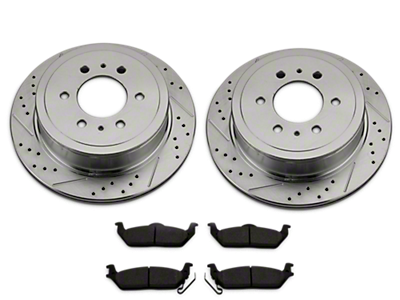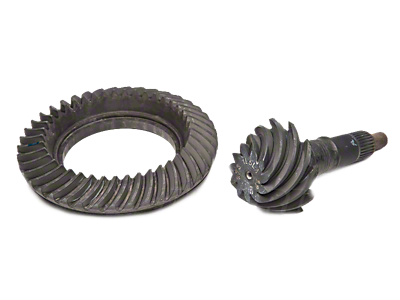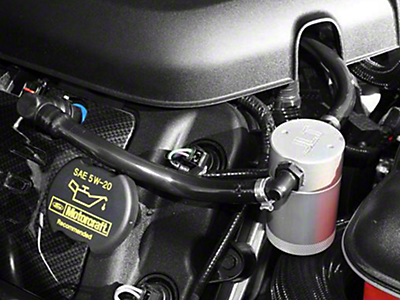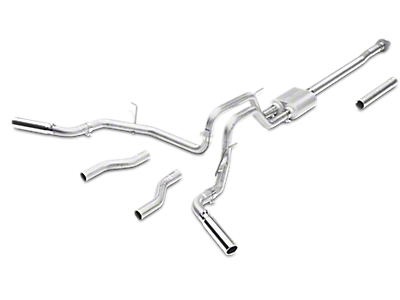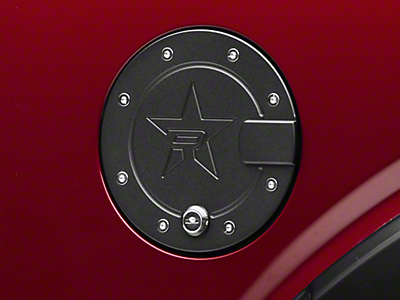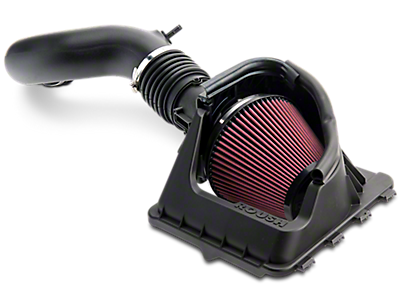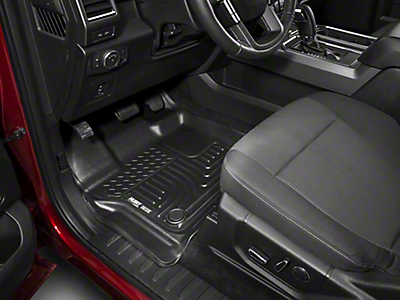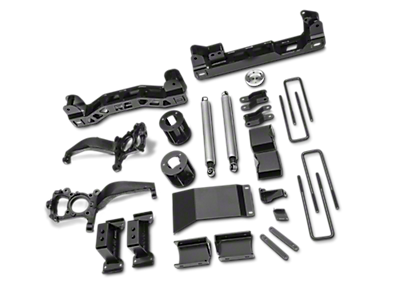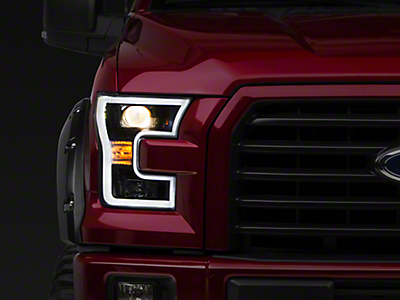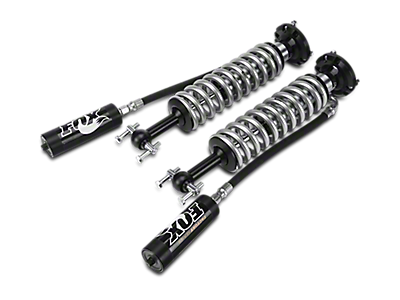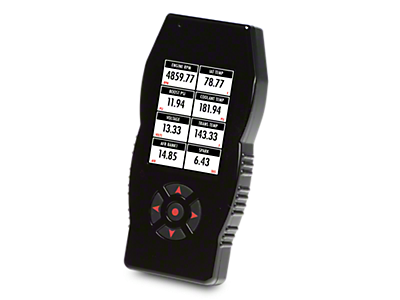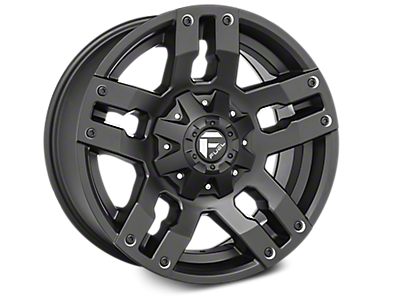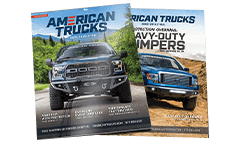There's nothing quite like driving a 2017 Ford F-150. You have a highly customizable platform that delivers plenty of power for towing, work, and even off-roading. Not only are these trucks powerful, but the aftermarket support for the 2017 Ford F-150 is second to none in the truck market. Plenty of parts and accessories are available, so you shouldn't have any problems swapping out the drivetrain, adding new wheels, or even getting your hands on a throatier exhaust. When you need 2017 Ford F-150 accessories, there's simply no better place to shop than AmericanTrucks. Explore truck parts online and accessories from some of the best brands in the industry, such as Brembo, Bilstein and K&N. We carry tuners, lift kits, wheels and tires, exhaust parts, drivetrain parts, bumpers, and much more. Whether you need to replace your front or rear bumper, or you want to give your Ford F-150 a bit more lift, we have all your parts and accessories needs covered.
2017 Ford F150
The 2017 Ford F150 undergoes its first refresh since the 2015 debut featuring it's all-aluminum body. Part of this 2017 refresh includes the introduction of the second generation 3.5L EcoBoost V6. It receives direct injection and a resulting 10 horsepower bump and massive 50 lb-ft torque increase, bringing the total numbers to 375 horsepower and 470 lb-ft of torque! Also released with this iteration of F150 is a new 10-speed automatic transmission. Developed co-jointly with GM, this new close-ratio gearbox can shift non-squentially, employs adaptive-shift monitoring over 12 various parameters and is the first ever transmission implemented by Ford with absolutely zero cast-iron parts. The remaining engines carry over: the naturally aspirated 3.5L V6, 2.7L EcoBoost and 5.0L Coyote V8. Perhaps more exciting than all of this is the return of the F150 Raptor. Disappearing back in 2014, the Raptor returns with vengeance for 2017, sporting a 6" wider track, 2" more of ground clearance and a tuned up 3.5L EcoBoost throwing down 450 horsepower and 510 lb-ft of torque. Vengeance indeed.
Complete Induction Overhaul
If you're impressed with the numbers the new 2017 Raptor puts down and want similar, overhauling the intake system is a good way to begin down that path. Starting with a combo cold air intake and tuner package, this one-two punch can net 30-40 horsepower on the naturally aspirated 5.0L and upwards of 40 on the EcoBoost turbocharged engines.
- 5.0L Coyote: 30-40 horsepower
- 2.7L and 3.5L EcoBoost: 40+ horsepower gain
The cold air intake helps power production by improving flow and eliminating restriction, allowing cool, oxygen dense air to reach the combustion chamber with less effort. Coupled with a tuner that reprograms the engine with more aggressive fuel, spark and timing settings, another benefit of purchasing a tuner/cold air intake combo is the tuner will already be programmed to account for the new flow parameters brought by the performance air intake. Working together, these two components complement each other extremely well and allow for maximum power and torque to be achieved versus installing each piece separately.
Matching Throttle Body
Contining on the gain train, installing a larger throttle body will further performance and get you that much closer to Raptor-like levels. EcoBoost motors use a 68 mm unit and the larger 5.0L V8 Coyote is equipped with an 80 mm unit from the factory. Increasing the size of the throttle body will improve air flow, particularly at the top end, and mesh well with a cold air intake and tuner package as discussed above. While generally not a piece to produce outright power on their own, throttle bodies are considered more of a supporting modification, allowing for big power to be made instead of acting as a bottleneck. On its own, this will be the case, adding maybe 4-7 horsepower on the top end. That said, however, when taken into account and paired with a tuner and large intake, these results are magnified. Coyote engines can upgrade to a 85 mm or 90 mm size (this size does require a tune), with the former being more optimized for street/work duties. In regards to the EcoBoost engines, jumping up to a 73 mm throttle body will aid in air flow without dropping the velocity too much to lose low end torque. When selecting a throttle body, the smoothness of the bore will play a large role in performance. Thus, opt for throttle bodies that have machined surfaces, as they will provide smooth air flow. Jagged edges and the like will create turbulence, which can hamper performance. Cheaper versions may not do a good on the bore or throttle plate, creating inefficiencies and possibly excessive noise (whistling) as the air rushes over.
The Importance of High-Quality Parts and Accessories
Whether you plan on using your F-150 as a work truck, as a capable off-road vehicle, or a family car for taking your kids to practice, it’s important to keep the truck as safe, and reliable as possible. You can achieve this only by using parts made with high-quality materials and by respecting manufacturer standards. By using 2010 Ford F-150 parts of the highest-quality for regular maintenance, your truck will stay reliable under normal driving circumstances. If you use your truck for anything it wasn’t made to do, you’ll need to include heavy-duty parts that will be capable of taking a beating. Adding a lift kit or replacing certain suspension components is a common upgrade that increases a truck’s capability of navigating roads less taken. The suspension plays a huge role in a truck’s stability, and ability to overcome large obstacles. It also has a big impact on the safety when driving on paved roads too, which is why you need to have good-quality components from proven brands. Performance upgrades are common as well, and adding 2010 F-150 accessories can have an effect on the truck’s engine or drivetrain. Using low-quality parts can have a negative impact on these systems, ultimately causing premature wear and tear. Premium quality-parts, on the other hand, maintain a truck’s durability, and even improves it. Whether it’s maintenance parts or 2010 Ford F-150 accessories you’re looking for, you’ll find it at AmericanTrucks quickly, and easily.
Finding the Right Parts for Your F-150
Given the F-150’s versatility, it’s one of the trucks that can be modified in any way - from a truck in construction work, to the most agile off-road vehicle, it can do it all with the right 2010 Ford F-150 parts and accessories. At AmericanTrucks, we are dedicated to offering the best-quality 2010 Ford F-150 accessories at the best possible price. Customer experience is essential, which is also why we provide extremely fast shipping times, and a simple platform to navigate and find exactly what you’re looking for. By including your truck’s year, make, and model, you’ll find only accessories that are fully compatible with your truck.
Types of Ford F-150 Parts and Accessories
The factory parts that a 2017 Ford F-150 comes with are built to last, but eventually, items like the brakes, shocks, and other drivetrain components will wear down. In these cases, AmericanTrucks carries replacement OEM parts, along with high-quality parts from the best brands in the industry. So, if you need something replaced, we have you covered. Adding new parts and accessories to your Ford F-150 does more than make it look unique or help you stand out from the crowd. Performance parts like cold air intakes, exhaust parts, and new gears can increase the horsepower of the engine and help with towing. New headlights can help you see the road, interior parts can dress up the interior or add innovative technology to the dashboard, and suspension kits will help you stay on the road – or off it if you plan on hitting the trails. If you want your F-150 to stand out from the rest, make that possible with a lift kit, which can open up new large wheel and tire options. Aesthetic parts and accessories including bumpers, exterior accessories, and new hoods also shouldn't be overlooked. Not only do these parts help your truck look nice, but many of them can reduce the curb weight, improve airflow to the engine, and further enhance your diving experience.
How to Choose Ford F-150 Parts and Accessories
At AmericanTrucks, we make finding 2017 Ford F-150 parts a breeze. Filter options based on your model and year, and then start to browse through parts you may like. Make sure your selection accounts for styling choices, and always tune your F-150 if you’re adding performance parts that need to work together; a simple Bama tune is even enough to make the most out of your build. When you need 2017 Ford F-150 accessories there's no better place to shop than AmericanTrucks. Purchase your Ford F-150 parts today for convenient shipping options and affordable prices you can't beat. Don't know where to start? Speak with one of our helpful sales techs for all of your 2017 Ford F-150 questions.


